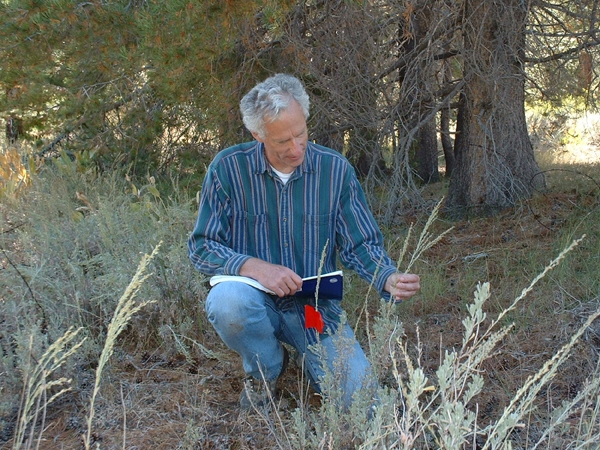
So says ecologist Richard 'Rick' Karban, professor of entomology, UC Davis Department of Entomology and Nematology, and author of the newly published book, Plant Sensing and Communication (University of Chicago Press).
Over the past several years, we've heard Karban speak about plant communication at UC Davis and beyond. His talks always draw an enthusiastic crowd.
Whenever I see Gulf Fritillary caterpillars chewing on our passionflower vine (yes, we planted the vine for the butterflies), I wonder what the plant is sensing with all that crunching, munching and chomping going on. Sometimes a scrub jay will swoop down and grab a beakful of caterpillars. Sometimes a praying mantis or European paper wasp will target the 'cats. Sometimes I feel sorry for the passionflower vine--especially after the 'cats have defoliated it, leaving only scarred stems.
It's a battlefield out there, and so fascinating.
So we asked Karban "What are 10 things to know about plant sensing and communication?"
Here's the list:
- Plants sense their environments and respond.
- Although they lack central nervous systems, they process information and appear to "behave intelligently."
- They sense the position of competitors and "forage" for light.
- They sense the availability of water and nutrients in the soil and "forage" for these resources.
- Their decisions are influenced by past experiences, akin to memory.
- The respond to reliable cues that predict future events, allowing them to "anticipate."
- Plants respond differently to cues that they themselves produce, allowing them to distinguish self from non-self.
- They respond differently to close relatives and strangers.
- Plants that are prevented from sensing or responding experience reduced fitness.
- By understanding the "language" of plant responses, we can grow healthier and more productive plants.
The 240-page book is a “landmark in its field,” said Graeme Ruxton of the University of St. Andrews, UK, co-author of Experimental Design for the Life Sciences and Plant-Animal Communication.
“Karban seeks to argue that plants behave—that they sense their environment, detect and communicate with an array of different organisms, and respond to their sense of the environment and communication,” Ruxton said. ”He is very successful in this, demonstrating that plant sensing and communication is a vibrant area of current research with still plenty more to discover.”
The book is “the first comprehensive overview of what is known about how plants perceive their environments, communicate those perceptions, and learn,” according to the publisher. “Facing many of the same challenges as animals, plants have developed many similar capabilities: they sense light, chemicals, mechanical stimulation, temperature, electricity, and sound. Moreover, prior experiences have lasting impacts on sensitivity and response to cues; plants, in essence, have memory."
Karban has researched plant communication in sagebrush (Artemisia tridentata) on the east side of the Sierra since 1995. His groundbreaking research on plant communication among kin, published in February 2013 in the Proceedings of the Royal Society B: Biological Sciences, drew international attention. In that study, Karban and his co-researchers found that kin have distinct advantages when it comes to plant communication, just as “the ability of many animals to recognize kin has allowed them to evolve diverse cooperative behaviors.”
“Plants responded more effectively to volatile cues from close relatives than from distant relatives in all four experiments and communication reduced levels of leaf damage experienced over the three growing seasons,” they wrote.
In other words, if you're a sagebrush and your nearby kin is being eaten by a grasshopper, deer, jackrabbit, caterpillar or other predator, communication is more effective if you're closely related. Through volatile cues, your kin will inform you of the danger so you can adjust your defenses.
Karban likened this kind of plant communication to eavesdropping.” Plants “hear” the volatile cues of their neighbors as predators damage them.
Karban is featured in the Dec. 23-30, 2013 edition of The New Yorker in Michael Pollan's piece, “The Intelligent Plant: Scientists Debate a New Way of Understanding Plants."
Attached Images:
